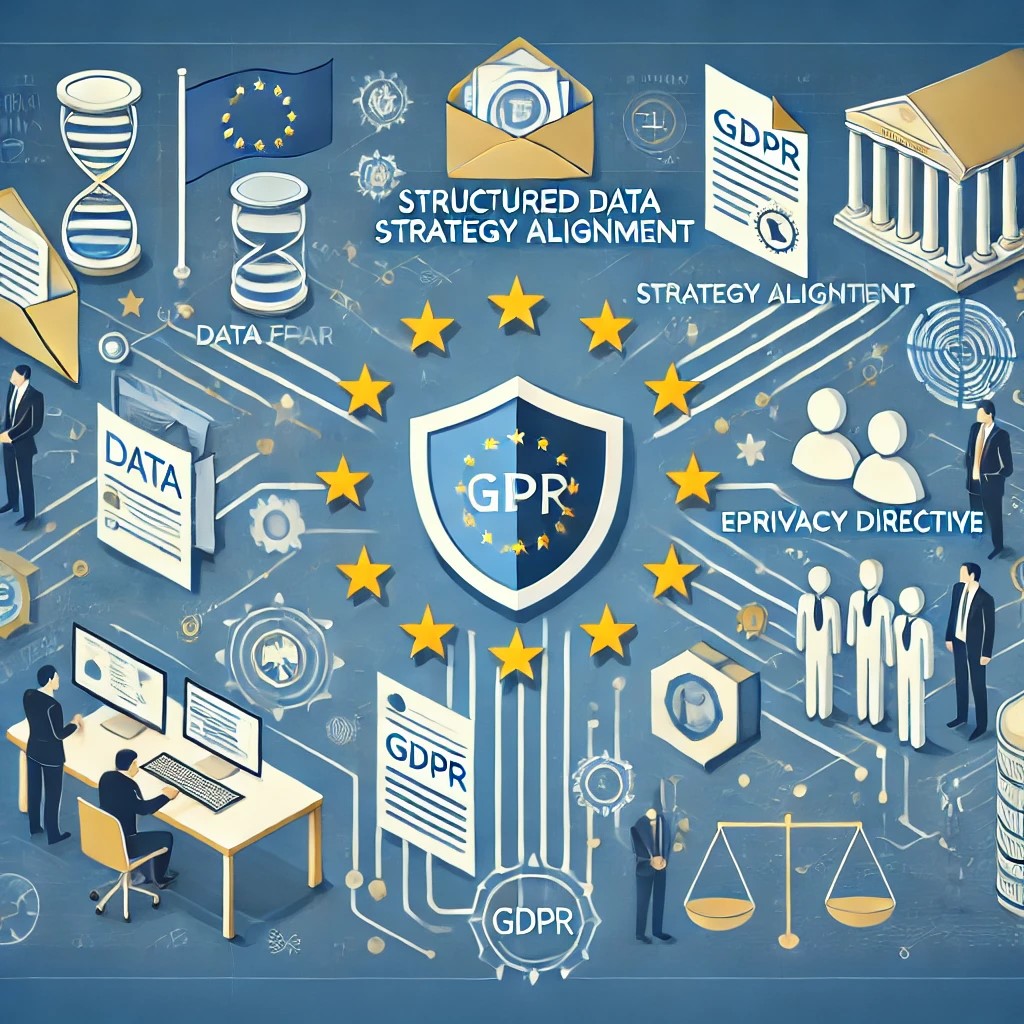Data protection is not just a legal requirement but also a cornerstone of customer trust. In this guide, we’ll walk you through a step-by-step approach to ensure your data strategy aligns with the General Data Protection Regulation (GDPR) and the ePrivacy Directive. From identifying data types to implementing privacy-first practices, we’ve got you covered.
Why Aligning Your Data Strategy Matters
Ensuring compliance with GDPR and the ePrivacy Directive isn’t optional. Non-compliance can result in fines of up to €20 million or 4% of your annual turnover, whichever is higher. Beyond penalties, businesses risk losing customers’ trust if their data practices aren’t transparent and secure.
Aligning your data strategy not only helps meet legal requirements but also builds a strong foundation for ethical data use, future-proofing your organisation in an increasingly privacy-conscious world.
Step 1: Map Your Data
The first step in aligning your data strategy is understanding what data you handle.
- Audit Your Data Sources: Identify all data collection points, including websites, apps, and third-party integrations.
- Categorise Data Types: Differentiate between personal data (names, emails) and sensitive data (health, biometrics).
- Data Flow Analysis: Document how data moves across your organisation, including storage and third-party sharing.
Pro Tip: Use tools like a data mapping software to visualise data flow and identify potential compliance gaps.
Step 2: Review Your Legal Basis for Data Processing
GDPR requires organisations to have a lawful basis for processing personal data. The ePrivacy Directive adds another layer by regulating the use of cookies and other tracking technologies.
- Consent: Ensure you collect explicit and informed consent for data collection, especially for marketing purposes.
- Legitimate Interest: Use this basis sparingly and document your justification.
- Contracts and Compliance: For employee or customer data necessary for fulfilling contracts, ensure terms are GDPR-compliant.
Actionable Tip: Revisit your cookie consent banners. They must allow users to opt in or out of non-essential cookies.
Step 3: Strengthen Your Data Governance Policies
Having clear data governance policies ensures consistency and accountability in your organisation.
- Update Your Privacy Policy: Make it clear, concise, and easily accessible.
- Set Retention Periods: Define how long you keep each type of data and implement automated deletion processes.
- Role-Based Access Control (RBAC): Limit data access to employees who need it for their role.
Resource: Read the ICO’s Guide to GDPR for in-depth advice.
Step 4: Embed Privacy by Design
The GDPR encourages organisations to implement Privacy by Design principles in their operations. This means integrating data protection measures from the start of any project or process.
- Data Minimisation: Collect only the data you absolutely need.
- Anonymisation and Encryption: Mask personal data wherever possible to reduce risk in case of a breach.
- Regular Risk Assessments: Evaluate potential risks to data and document mitigation strategies.
Step 5: Empower Your Team with Training
Compliance is not just about policies—your employees play a critical role in protecting data.
- Conduct Regular Training: Ensure staff understand GDPR basics, phishing risks, and secure data handling.
- Assign a Data Protection Officer (DPO): If required by GDPR, ensure the DPO is empowered to act independently.
- Build a Reporting Culture: Encourage employees to report potential breaches immediately.
Step 6: Monitor Compliance and Stay Updated
The privacy landscape evolves, and so should your strategy.
- Regular Audits: Conduct internal audits to identify new risks or gaps.
- Monitor Regulations: Stay informed about updates to GDPR, the ePrivacy Directive, and local laws.
- Leverage Technology: Use compliance software to automate monitoring and reporting.
External Resource: Stay updated on privacy developments via EDPB’s Newsroom.
Conclusion
Bringing your data strategy into alignment with GDPR and the ePrivacy Directive is a continuous process, not a one-time task. By following these steps, you can ensure compliance, mitigate risks, and build trust with your customers.
For further reading, explore our guide on how to conduct a data protection impact assessment (link to internal blog).









